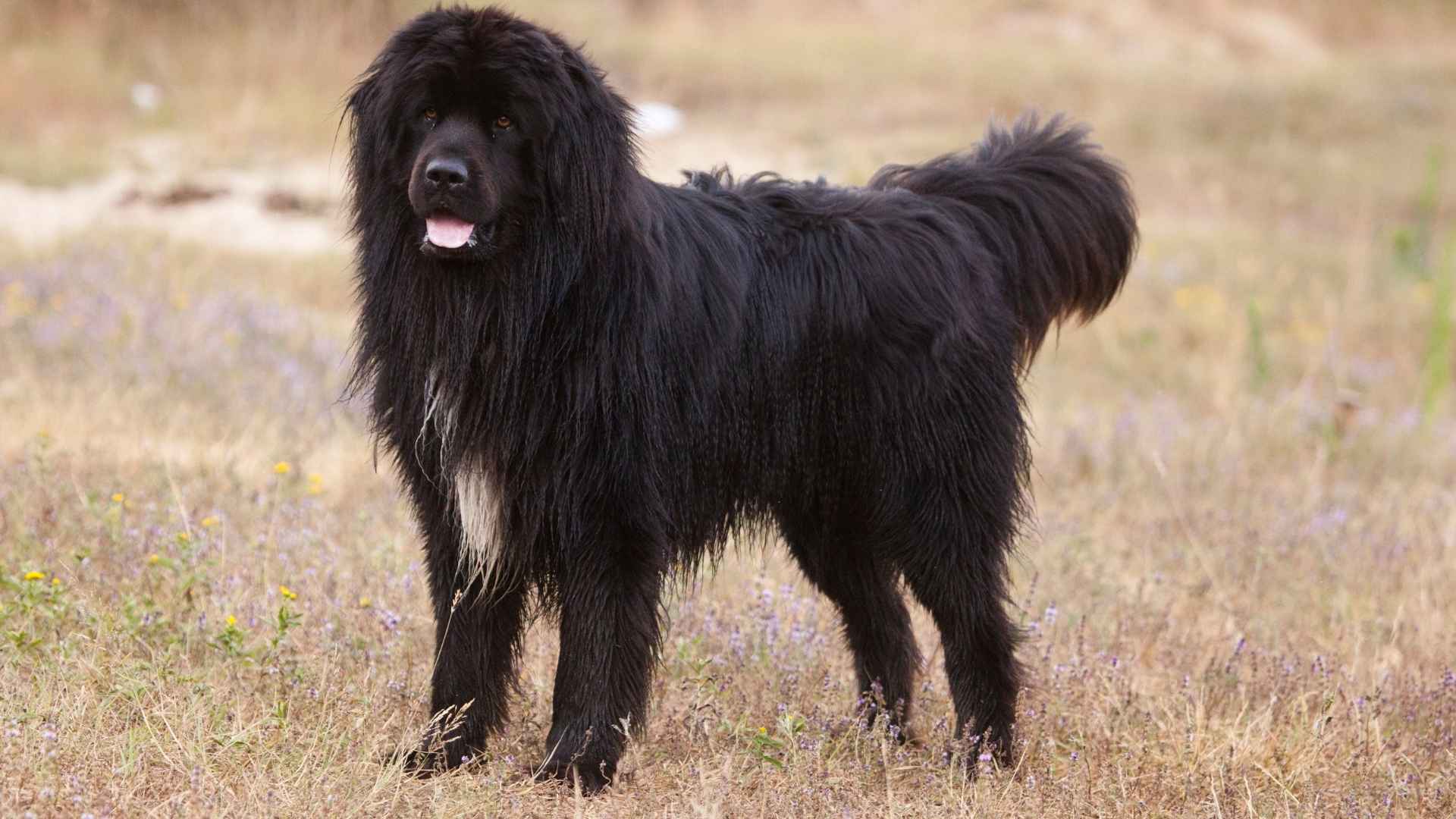There’s something magical about watching a massive dog gently lumber into a room, all size and gravity, only to flop down at your feet and melt into a puddle of sweetness. The largest dog breeds tend to favor relaxation over hyperactivity, often preferring to lounge indoors rather than bounce off the walls.
Big dogs often break the mold of the typical “energetic canine.” With many owners noting their couch-potato tendencies after a short burst of speed. That contrast between size and serenity is what gives these breeds their “softie” charm.
We’re digging into those gentle giants—those massive breeds whose hearts are bigger than their bodies, and whose calm demeanor makes them feel like the ultimate plush companion.
Massive dog breeds that act like big softies
Here are some gentle giants:
1. Great Dane
In the dog world, few of them are as iconic—or as towering—as the Great Dane. Originally bred for strength and speed to take down wild boars, these dogs now spend most of their days lounging like royalty on the nearest couch.
They look intimidating at first glance, with long legs, a deep chest, and a commanding presence, but don’t be fooled. According to PetMD, most Great Danes are just oversized sweethearts who crave attention, affection, and your entire house to stretch out in.
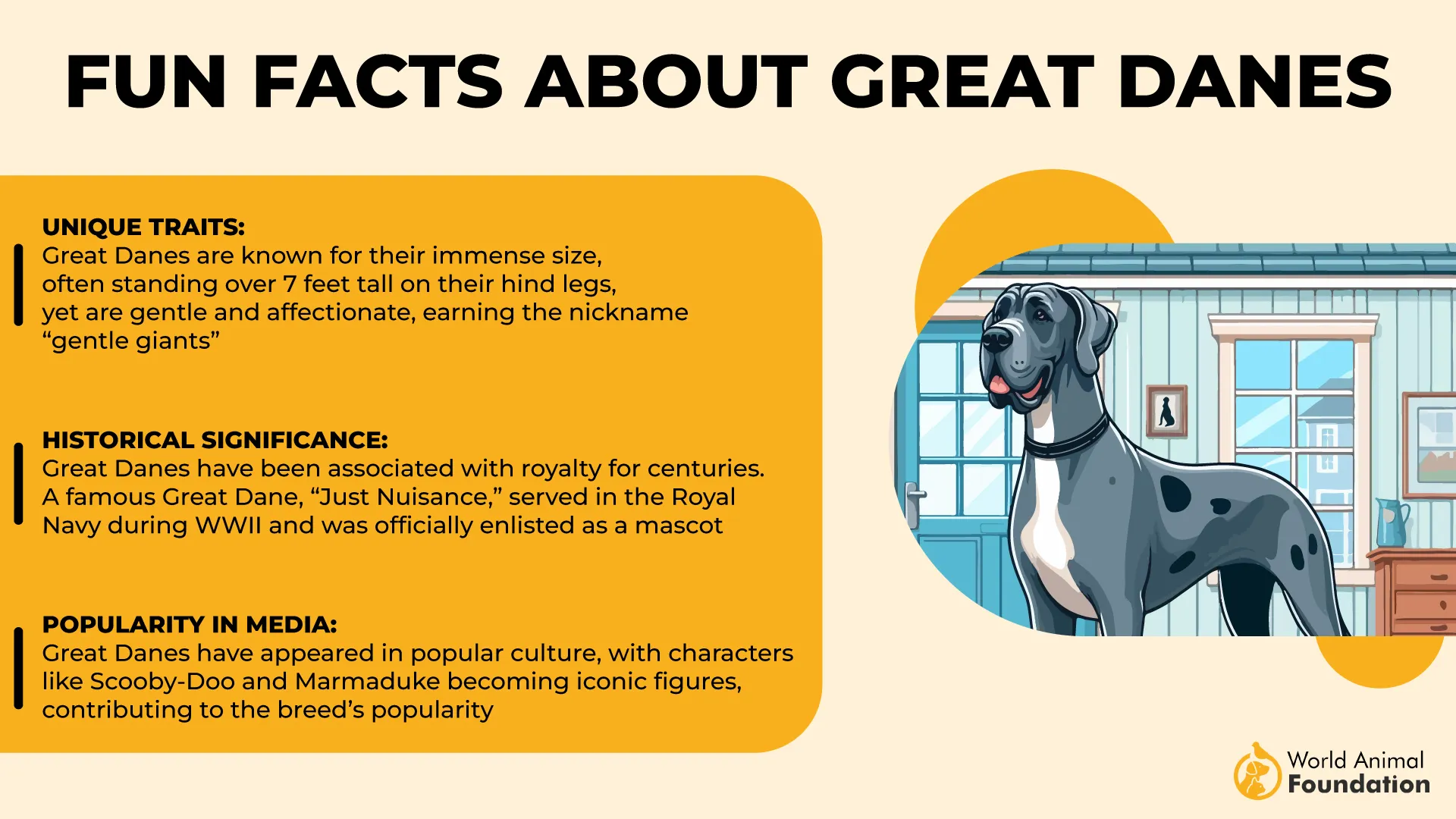
What Makes Great Danes Stand Out:
Once known as the German Mastiff, they were prized as hunting dogs for their stamina and power.
Frequently cited as the tallest dog breed, some Danes stand over 30 inches at the shoulder.
They mature fast physically but often stay puppy-minded, which can be both adorable and clumsy.
Their loyalty is unmatched—they’ll lean on their people (literally and emotionally).
With early socialization, they become deeply gentle with children, even when play gets loud.
Surprisingly, they love a good snuggle—many insist on being lap dogs, even if they barely fit.
What this means is that Great Danes strike a rare balance. They bring the security of a big dog, the temperament of a teddy bear, and the devotion that makes them ideal family companions.
While their size might scare off a potential burglar, they’re more likely to greet a stranger with sloppy kisses than a growl. They’re not aggressive—they’re just huge dogs with huge hearts.
2. Newfoundland
The Newfoundland might look like a massive, bear-like dog, but under all that fluff is one of the sweetest souls.. Originally bred in Canada to help fishermen haul nets and rescue drowning sailors, these dogs aren’t just strong swimmers—they’re natural lifesavers.
With a calm personality and an instinct to nurture, it’s no wonder they’ve earned the nickname “nanny dogs,” especially when caring for kids. You won’t find a more loyal or level-headed companion, especially one that weighs well over 100 pounds.
What Sets Newfoundlands Apart:
Webbed paws and thick, waterproof coats make them outstanding swimmers, even in freezing water.
Naturally affectionate, they bond deeply with their owners and thrive on emotional connection.
Despite their size, they’re surprisingly easygoing and adapt well to living indoors with enough space.
They rarely show harsh behavior—these dogs are wired for peace, not confrontation.
Living with a Newfoundland means sharing your home with a gentle guardian who’s always alert, always patient, and always ready to help.
They don’t bark without reason, they don’t demand the spotlight—they just quietly work, watch, and wait for their moment to help or comfort. They’re the type to remind you what real companionship looks like: steady, warm, and full of love.
3. Bernese Mountain Dog
The Bernese Mountain Dog is a big, tricolor fluffball with roots in the rugged farms of Switzerland. These dogs are more than just soft coats and soulful eyes—they’re dependable, hardworking companions with a goofy streak that sticks around long after puppyhood.
Originally used to pull carts of milk and cheese (earning them the nickname “Cheese Dogs”), Berners are strong yet easygoing, ideal for families who want a loyal shadow that’s always nearby.
What Makes Berners Unique:
Their “four eyes” markings give them a curious, almost human-like expression.
Known for their puppy-like personalities, even well into adulthood.
They were bred to pull heavy loads—up to 10 times their weight.
Do well in cool climates thanks to their thick, double coat—a true cold-weather dog.
Not hyperactive, but they enjoy having a job or task, even if it’s just following you around.
Can be a bit aloof with strangers, but deeply affectionate with their people.
Berners are the definition of a family dog, relaxed and always ready to work or play. They might not have the longest lifetime, but every year with a Berner is filled with laughter, muddy paws, and that unmistakable big grin. If you’ve got the space, patience, and time to give, a Berner will give you everything back, plus a whole lot of love.
4. Saint Bernard
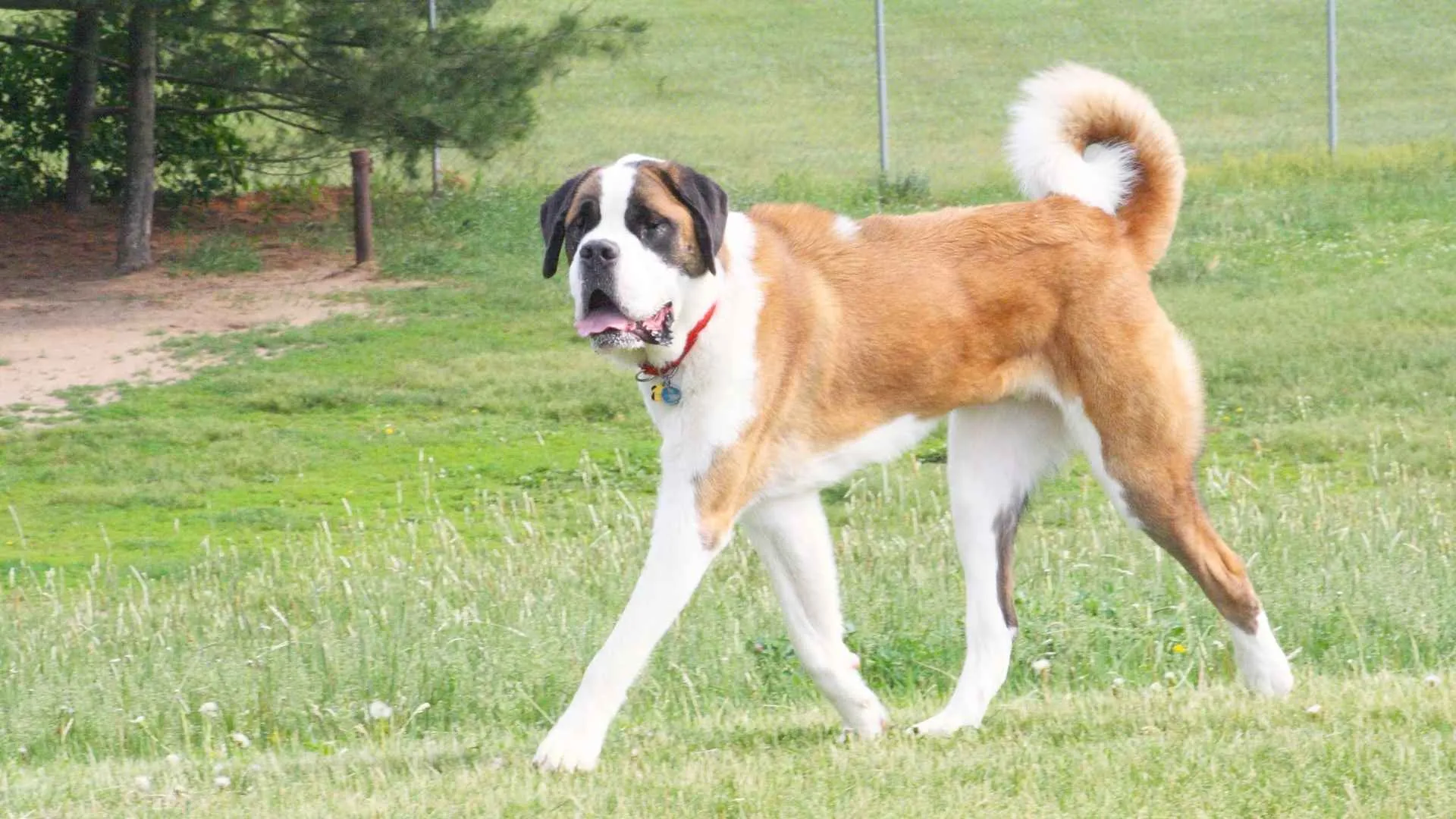
In the world of massive dog breeds that act like gentle giants, the Saint Bernard is legendary. Known for dragging stranded travelers to safety through blizzards in the Swiss Alps, their origin is as heroic as it is heartwarming. But beyond their rescue fame, Saint Bernards are surprisingly mellow.
They’re deeply affectionate, incredibly patient, and good-natured to the core. Their size alone means untrained habits can turn into household chaos, especially when they try to sit on your couch like lap dogs.
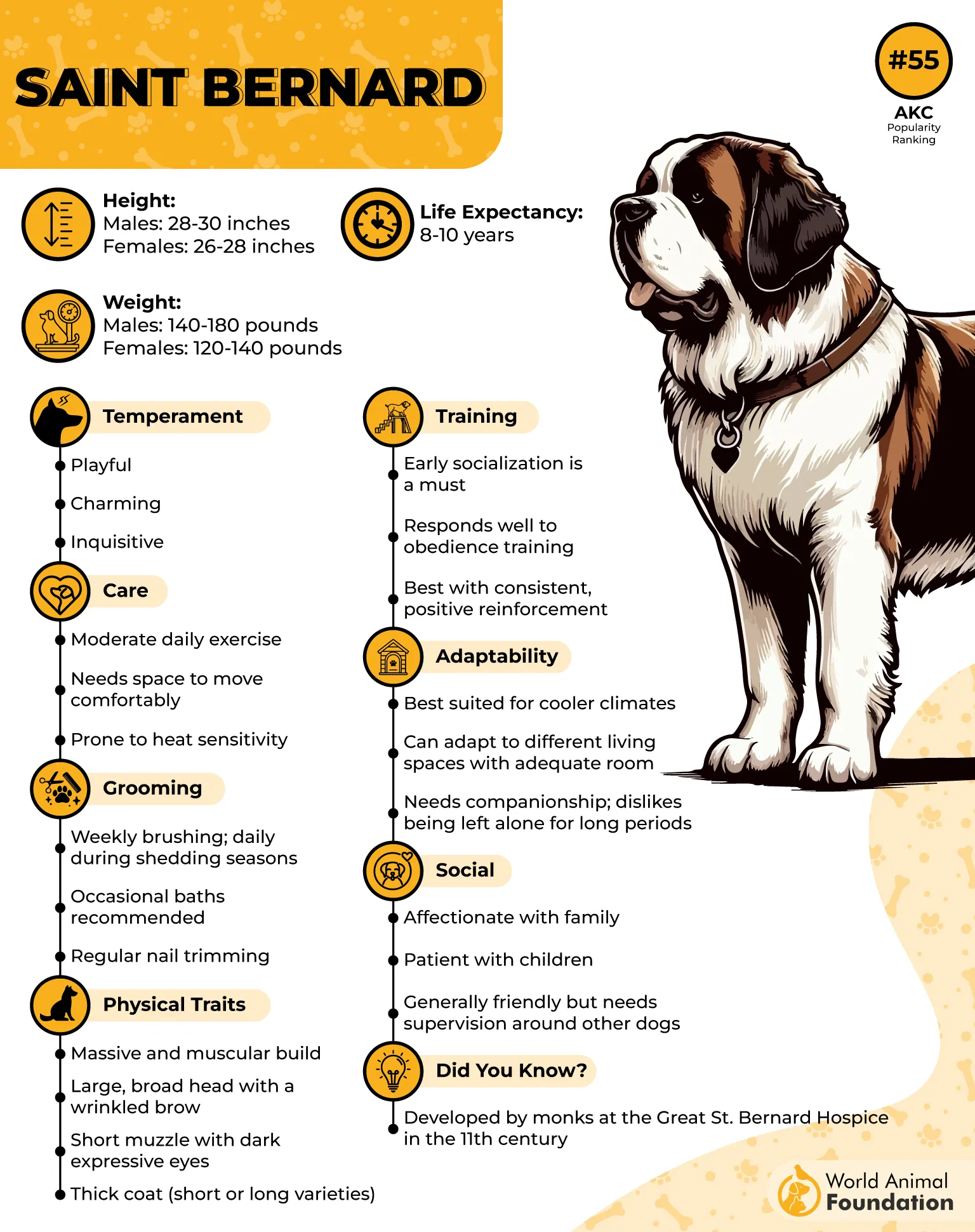
What Makes Saint Bernards Stand Out:
Bred by monks to rescue lost travelers from deep snowdrifts in the Saint Bernard Pass.
They have a massive build, with heavy bones, wide chests, and a trademark droopy face.
Typically calm and low-energy, one good walk a day keeps them happy.
Known for excessive drooling.
Thick coats keep them warm but make them vulnerable to heat, especially in summer.
Eat a lot—not just food, but space; they need a roomy place or at least a generous yard.
Saint Bernards are the definition of soft giants—protective without being pushy, and sweet without losing their sense of purpose. They’re not barky, not demanding, and certainly not aggressive.
Just give them space, basic training, and lots of love, and they’ll repay you with loyalty and a steady presence that fills the whole room.
5. Bullmastiff
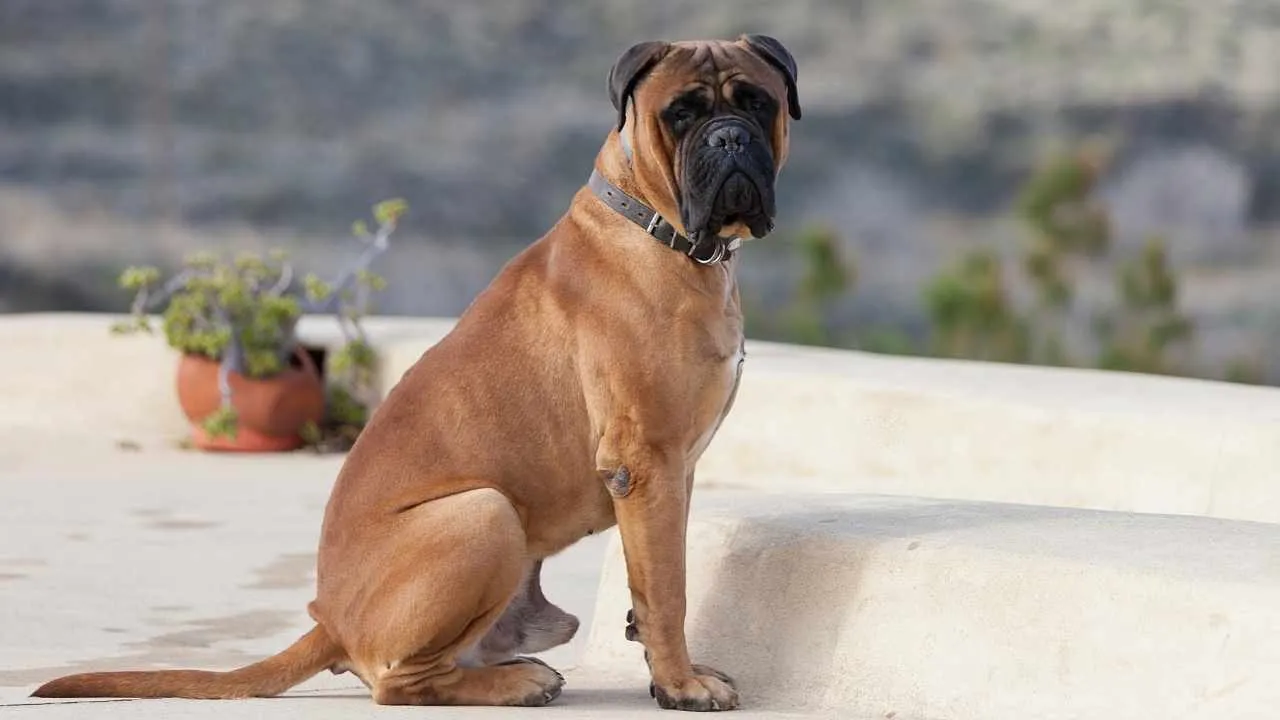
Created in the mid-1800s to guard estates from poachers, the Bullmastiff was bred to use strength and presence, not aggression. Today, that legacy still shows—this is a strong, stocky variety that’s deeply devoted to its people.
While they have a serious look and impressive size, Bullmastiffs are surprisingly low-key. These dogs don’t need constant activity or attention; they’re content just being close to their owners, often choosing the nearest shady spot or patch of couch to sprawl across.
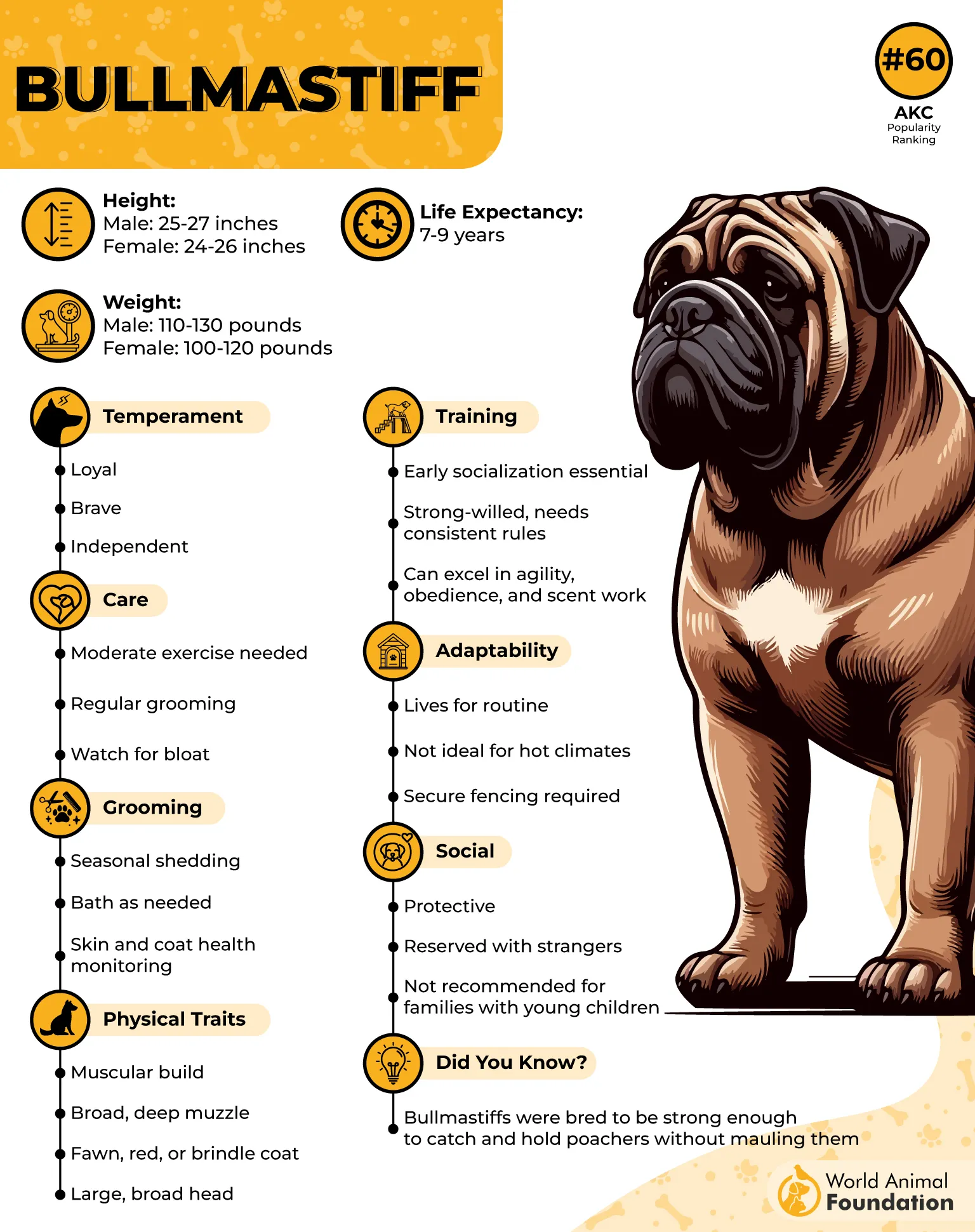
What Makes Bullmastiffs Distinct:
Developed to restrain intruders, not bite—guardians by instinct, not aggression.
Have a natural, calm energy, happy with short walks and long naps.
Extremely loyal—they form strong emotional bonds with their humans.
Can be a bit stubborn, so training takes consistency and patience.
Need early socialization to stay chill around other humans and other animals.
Despite their quiet nature, their physical presence alone can deter a burglar.
What this means is the Bullmastiff isn’t just a guard dog—it’s a quiet shadow that stays close, watches everything, and reacts only when needed. Their temperament is ideal for people who want a protective presence without the chaos of a high-energy pup.
As long as you’re firm but fair in training, and you offer your Bullmastiff a lot of quiet love, they’ll give back unwavering loyalty—and maybe a bit of heavy leaning when they want attention.
6. Great Pyrenees
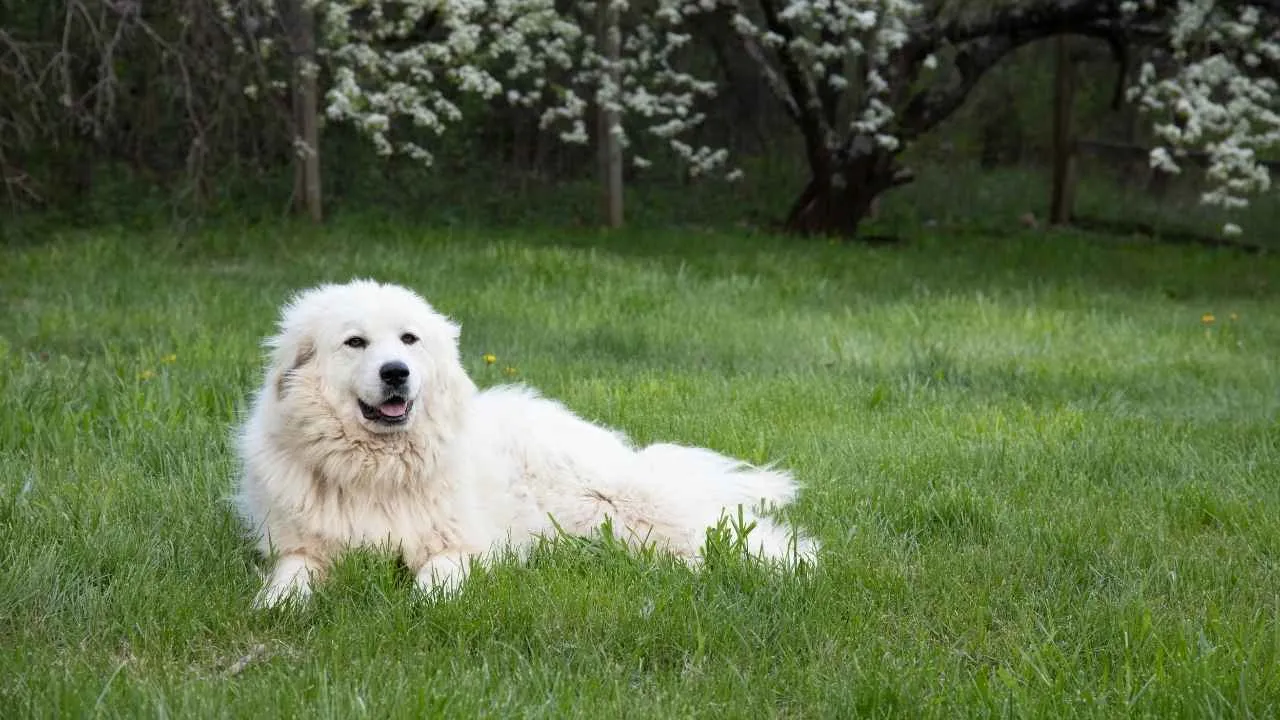
The Great Pyrenees might look like a walking snowdrift, but beneath that majestic white coat is an ancient variety built for endurance, independence, and family loyalty. Originally developed in the Pyrenees Mountains to guard livestock from wolves and bears, these dogs have retained both their fierce protective instincts and their observant nature.
Known for their patience and deep sense of responsibility, Great Pyrenees are not your average house pets—they’re independent thinkers who choose their moments and act with purpose.
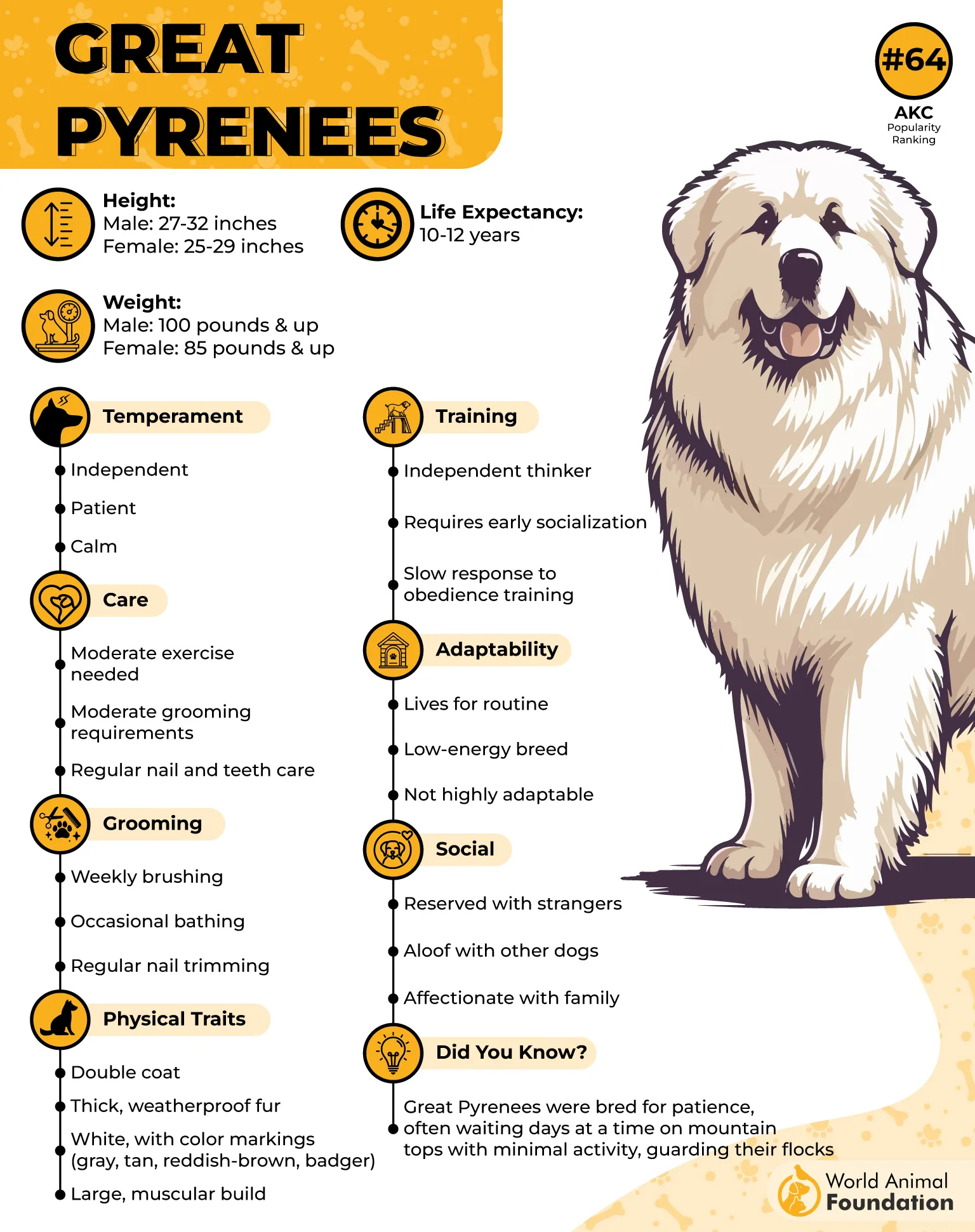
Why the Great Pyrenees Stands Out:
One of the most ancient, with fossil records dating back to the Bronze Age.
Their thick double coat and love for snow make them perfect for cold-weather living.
Often born with double dewclaws, aiding traction in rocky or mountainous terrain.
Known for their distinctive bark, which they use instinctively to alert and protect.
Once favored by French royalty, they served as noble bodyguards and castle companions.
Great Pyrenees dogs are not overly clingy—they won’t follow you everywhere like some big dogs—but their loyalty runs deep. They’re content lying in the yard, watching everything, offering silent protection.
They need structure, training, and a job to do, or they’ll invent one. Give them a place to roam, a family to watch over, and someone who understands that their calm is rooted in centuries of purpose—and you’ll gain a companion unlike any other.
7. Irish Wolfhound
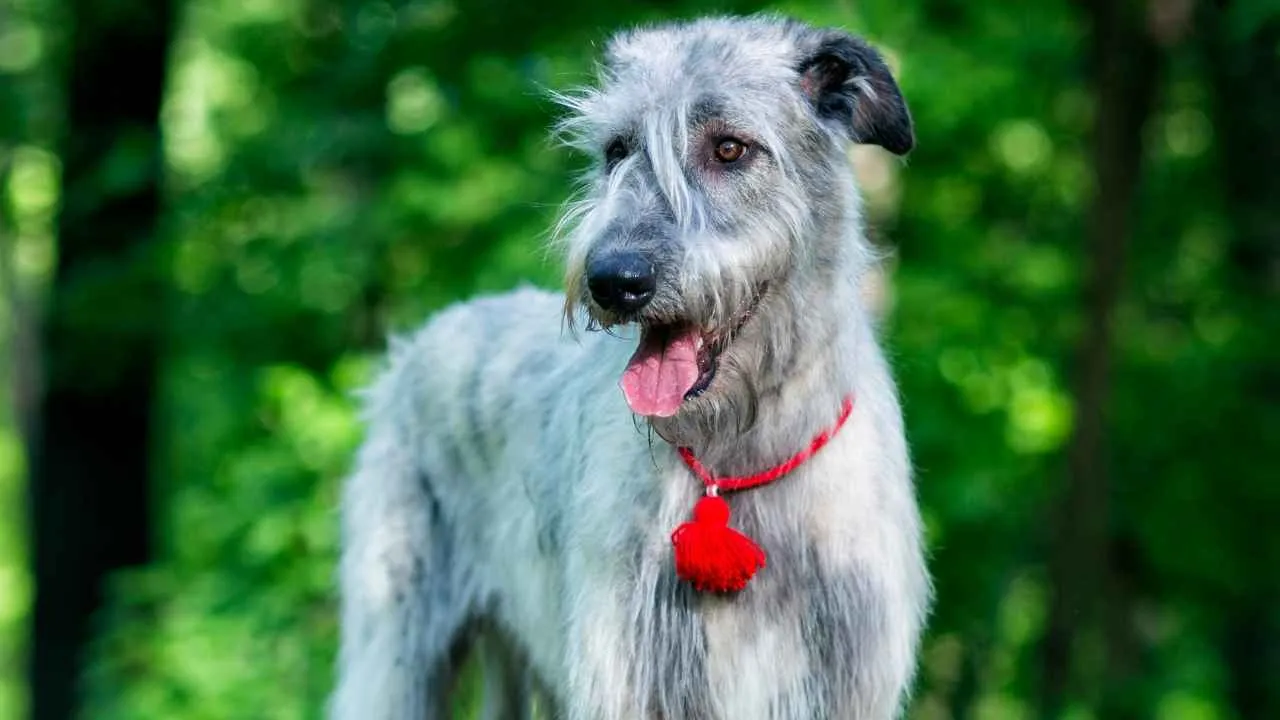
The Irish Wolfhound may have once charged into battle and hunted wolves across rugged terrain, but today, this giant is more about quiet companionship than combat. Standing taller than almost any other dog, their sheer size can stop strangers in their tracks—but spend five minutes with one and you’ll realize these dogs are as soft-hearted as they are tall.
Bred for strength, speed, and fearlessness, modern wolfhounds are now best suited to families with room to roam and a willingness to embrace their gentle but active spirit.
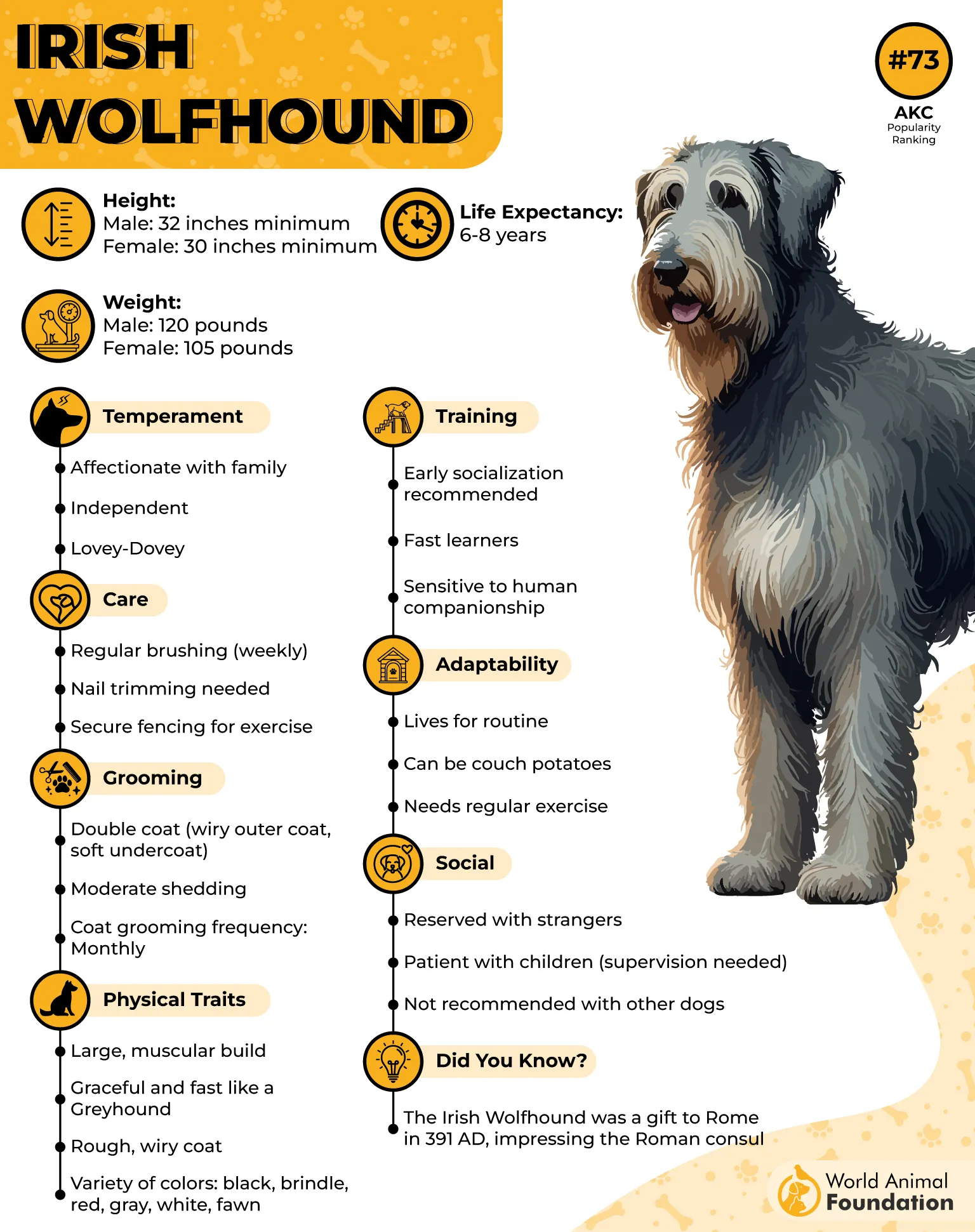
What Makes Irish Wolfhounds Unique:
Recognized as the tallest breed, with some reaching 7 feet on their hind legs.
Skilled hunters of wolves, wild boars, and deer—hence the name.
Officially, a national symbol of Ireland, full of historical and cultural weight.
They shed moderately and don’t experience heavy seasonal coat blowouts.
Living with an Irish Wolfhound means understanding the blend of nobility and need. They thrive in large yards, need regular, mindful exercise, and are happiest when included in family life.
While their reputation may echo with ancient battle cries, today’s wolfhound just wants a soft bed, gentle kisses, and a bit of your attention after a good run. If you’re looking for a regal, affectionate dog who brings peace, not chaos, into your home..
Conclusion
Choosing from these big yet affectionate giants isn’t just about looks or legacy—it’s about the kind of bond you want to grow with your dog. These gentle giants have earned their place beside humans not just because they’re strong or protective, but because they’re deeply friendly and eager to be part of the family. Whether they’re sprawling across your couch, watching over your children, or flopping down beside you for belly rubs, these dogs bring a kind of love that’s hard to match.
Pick the breed that fits your home, your lifestyle, and your heart. You’ll learn as you go—about patience, trust, and how much joy one animal can bring. What you give in care and companionship, these dogs will return tenfold. In the end, it’s not just about raising a good dog—it’s about letting them help you love more, grow together, and build something lasting.


